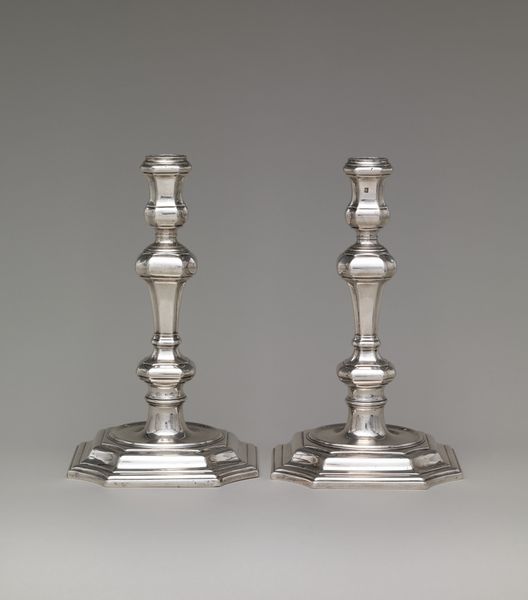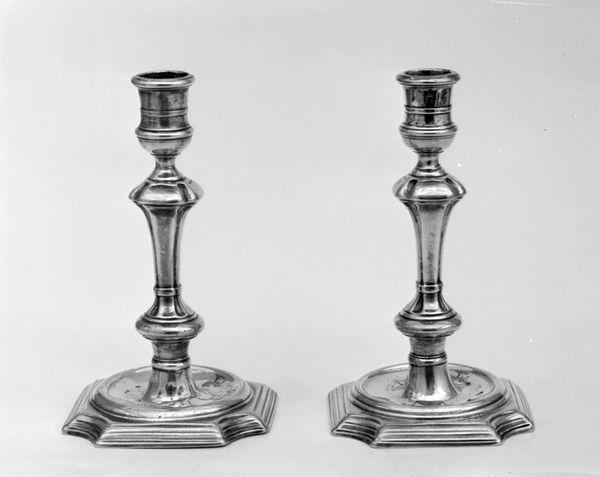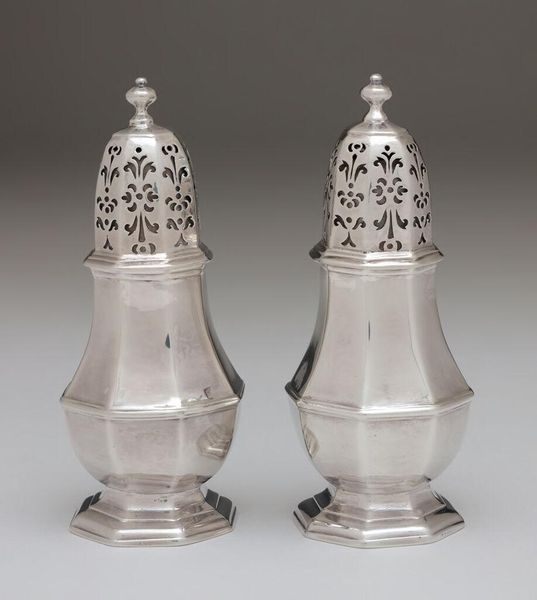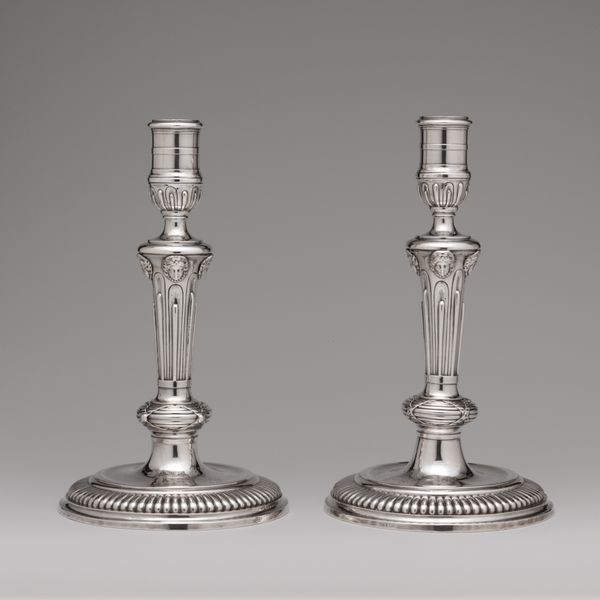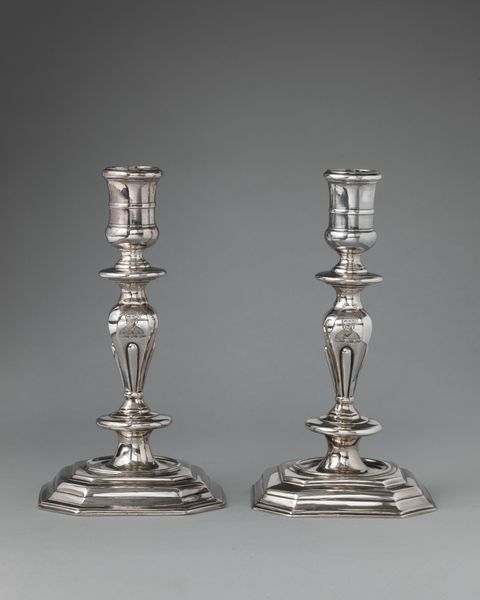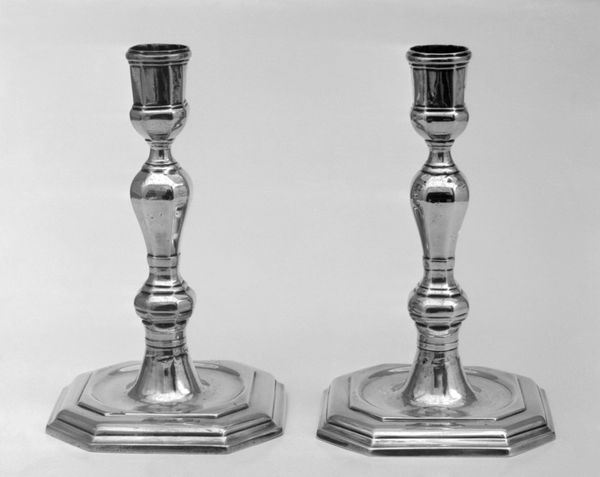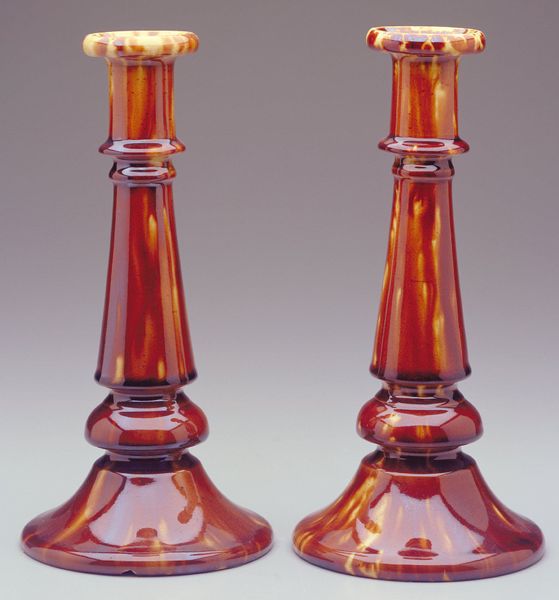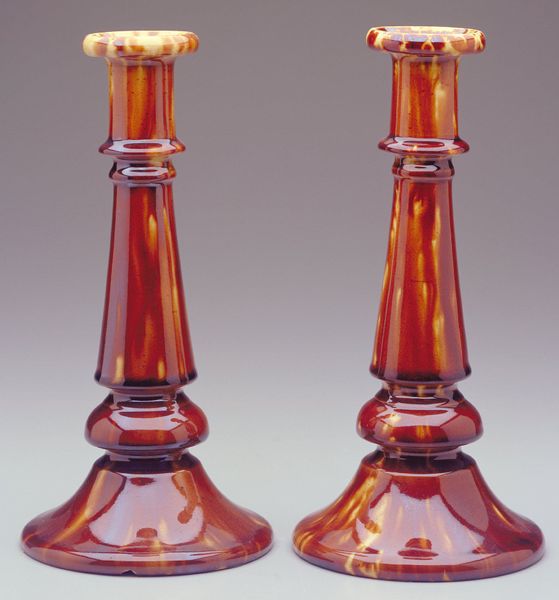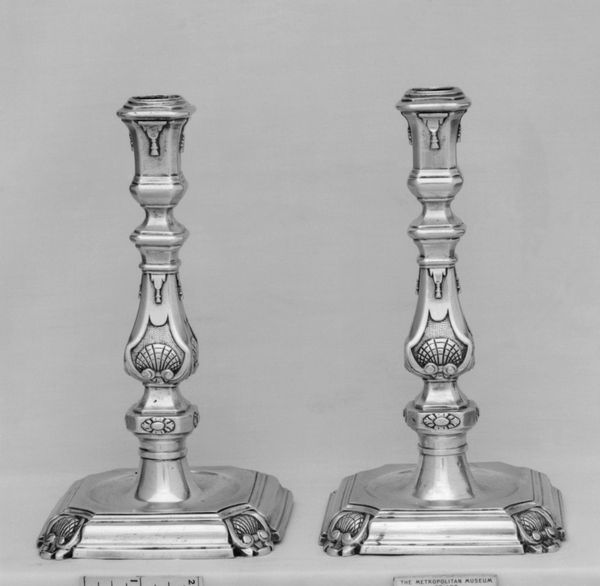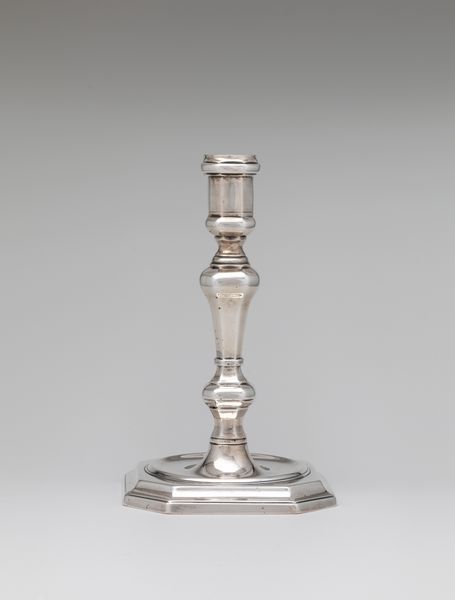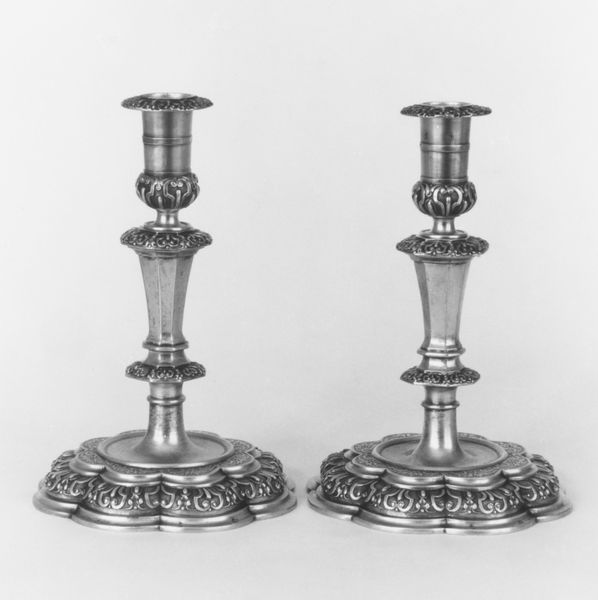
metal, glass
#
metal
#
glass
#
united-states
#
decorative-art
Dimensions: Sight: 14 1/2 x 5 1/2 in. (36.8 x 14 cm)
Copyright: Public Domain
Curator: Here we have a pair of Argand Lamps crafted around 1835 by Henry N. Hooper and Company. You can find them in the Metropolitan Museum of Art. Editor: My first impression is one of subdued elegance. The contrasting textures and the muted color palette give them a dignified yet approachable feel. There’s something inherently domestic and welcoming about these lamps. Curator: Indeed. Focus on the formal elements for a moment. Notice the repetition of cylindrical and bulbous forms, echoed throughout both the metal bases and the frosted glass shades. The interplay between the opaque metal and the translucent glass creates a captivating dialogue of light and shadow. Editor: And how might these lamps have functioned within the socio-cultural landscape of the time? Were they signifiers of wealth and domesticity? Were these a revolutionary type of illumination, or did they simply reinforce existing social stratifications around who gets access to light after sundown? Curator: Precisely the questions we need to consider! The design adheres to a distinct sense of balance. Observe the placement of the floral etchings on the glass—they provide visual interest without disrupting the lamp's overall geometry. It exemplifies a refined approach to decorative art. Editor: Let's think about this glass. Was it locally sourced, imported from Europe? To understand an object is to consider how its materiality intersects with economic and political systems of that time. These weren't just aesthetic objects; they were commodities, emblems of status tied to colonial and trade routes, revealing social layers behind its material value. Curator: An excellent point! The lamps certainly represent more than mere function, these design elements indicate thoughtful craftsmanship. And in that sense, these lamps transcend their utility. Editor: Absolutely, they acted as material anchors connecting private, domestic spaces with broader patterns of innovation, production and commerce. Their story is entwined with social progress as much as individual aesthetic values. Curator: By considering the structure, symmetry and surface treatments alongside sociohistorical analysis, a much more complete appreciation emerges. Editor: I agree. Investigating both the formal arrangement and these Argand lamps' historical presence creates a fuller perspective on their relevance even today.
Comments
No comments
Be the first to comment and join the conversation on the ultimate creative platform.

